All of these homes, and many others, have failed to live up to the slice of history they once cradled
Homes once inhabited by notable Haitian cultural, historical, and artistic figures, as well as other places of remembrance that should otherwise be protected by the Haitian state, are not. According to specialists contacted by AyiboPost, this is a testament to public officials’ disregard for preserving and transmitting the country’s heritage.
Today, some of these dwellings are abandoned, vandalized, and dilapidated far from any State oversight, surrounded by piles of waste and treasured by vermin and rodents, when they have not simply burned down.
Thus, the house where Alexandre Pétion is said to have lived, on Rue de l’Enterrement, which used to be occupied by the Ministry of Social Affairs and Labor, now houses a garage, in the worst of conditions.
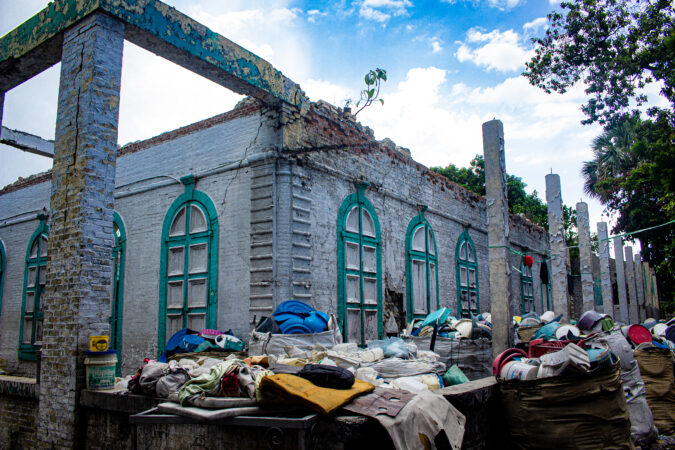
August 11, 2023, a view of the courtyard of the former house where Alexandre Pétion is said to have lived on Rue de l’Enterrement, according to testimonies. | © Jean Feguens Regala/AyiboPost
On site, we met a young man who frequents the space once inhabited by one of the country’s first heads of state, he told AyiboPost: « I heard that this was the former residence of Pétion. However, I don’t know if it’s true. So many things are said in this country. »
Read also : La maison où naquit Alexandre Pétion est un dépotoir au cœur de Port-au-Prince
On l’Avenue Christophe, you can find the majestic Castel Fleury, the former residence of President Tancrède Auguste, grandfather of Jacques Roumain. Dilapidated and looking abandoned, this building served as a presidential palace following the explosion of the National Palace resulting in the death of President Cincinnatus Leconte in August 1912.
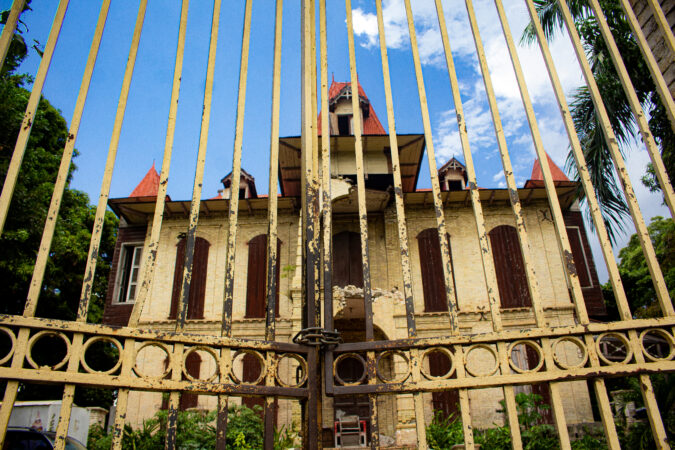
August 11, 2023: A view of the facade of La Villa Castel Fleuri, the residence of Tancrede Auguste, which served as the presidential palace after the explosion of the national palace resulting in the death of C. Leconte in August 1912. | © Jean Feguens Regala/AyiboPost
In Bois Verna, the former residence of writer Jacques Roumain was occupied by a school a few years ago. Today, there is nothing distinctive to mark its presence.
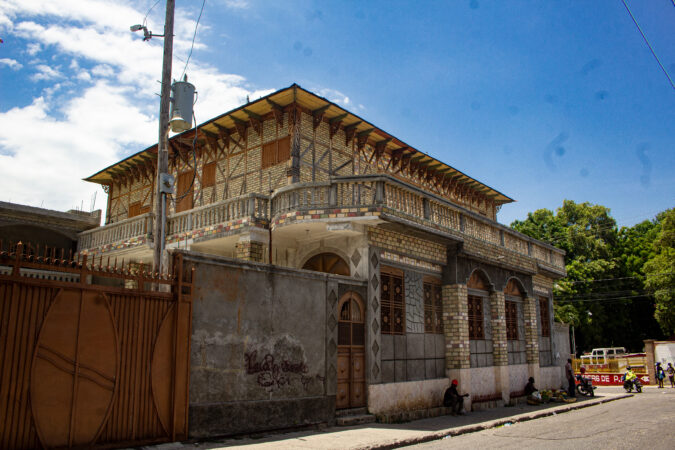
A view of the former residence of the writer Jacques Roumain in Bois-Verna, on August 11, 2023. | © Jean Feguens Regala/AyiboPost
All of these homes, and many others, have failed to live up to the slice of history they once cradled.
While some of these houses are in very poor condition or even in ruins today, like Anténor Firmin’s in the city of Cap-Haitien, others, still fortunate enough to stand, serve functions far removed from any historical interest.
« In reality, the fact that a school is housed in Jacques Roumain’s former residence helps save the house from deterioration. However, that is not the role it should fulfill, » explains filmmaker Arnold Antonin, who believes that the home of the author of « Masters of the Dew », and many others, should be transformed into a museum to keep alive the memory of those who once inhabited them.
Read also : Pourquoi faut-il relire « Gouverneurs de la rosée » de Jacques Roumain ?
« In Carrefour, there was the famous Brochette gallery, where the intellectual and artistic elite of the country gathered in the 1960s-1970s, as well as the residence of the renowned painter André Pierre, which was divided among heirs after his death: almost nothing remains of all that today, » says Antonin.
It must be said that the earthquake of January 12, 2010, destroyed a large part of these houses that belonged to prominent figures.
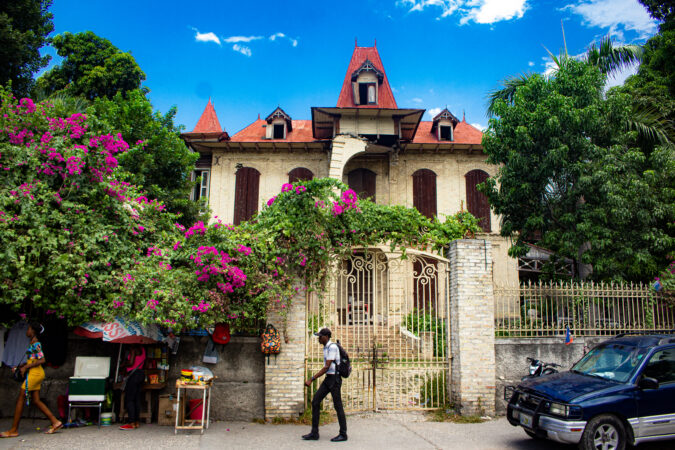
August 11, 2023: A view of the facade of La Villa Castel Fleuri, the residence of Tancrede Auguste, which served as the presidential palace after the explosion of the national palace, resulting in the death of C. Leconte in August 1912. | © Jean Feguens Regala/AyiboPost
For example, this is the case of the Manoir des Lauriers, the former residence of the French Ambassador to Haiti, located in Bourdon, which once belonged to President Elie Lescot.
However, even before the earthquake, the Haitian state had always denied protecting its built heritage, argues Arnold Antonin. « It was with a heavy heart that I witnessed the destruction of Fort Mercredi », regrets the filmmaker.
Located in the heights of Morne l’Hôpital in the commune of Carrefour-Feuilles, the last historical remains of Fort Mercredi, built by the French towards the end of the 19th century, have disappeared under the passive eye of the Haitian authorities.
For Iléus Papillon, President of l’Observatoire Patrimoine, the State has abandoned the country’s heritage. Despite the fact that the Ministry of Culture has designated 2023 as the Year of Heritage, « not much is really being done », he says.
Read also : La citadelle risque de perdre son statut de patrimoine mondial
« The Forts Jacques and Alexandre in Kenscoff, Fort Réfléchi in Pestel, the 365 Door Palace and the Fort of Crête-à-Pierrot in Petite-Rivière de l’Artibonite are either under the control of armed gangs or abandoned, completely ignored by decision-makers, » explains Papillon.
According to the sociologist, there has always been a certain disregard by leaders in Haiti of the historical heritage of the country. « In this situation, it is the essence of our History and our identity as a people that is threatened, » he said to AyiboPost.
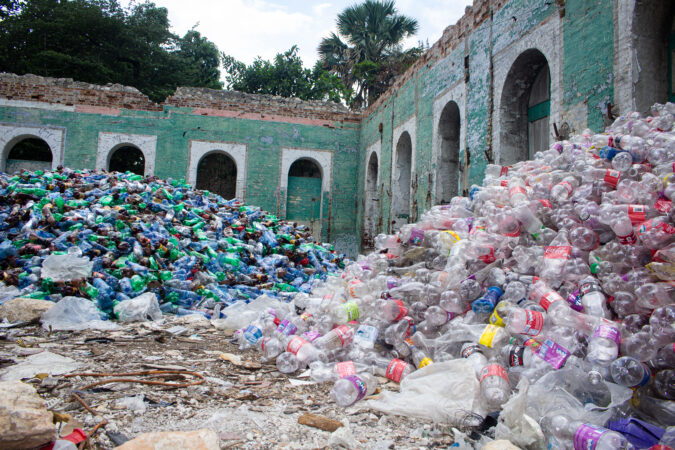
A view from the inside of the old house where Alexandre Pétion is said to have lived, which is in poor condition today. | © Jean Feguens Regala/AyiboPost
The Institute for the Safeguarding of National Heritage (ISPAN) would like to keep these houses in the best preservation conditions, but the institution struggles to carry out its work due to an insufficient budget and weak restoration laws in Haiti. So says Elsoit Colas, the technical director of the state institution.
« Inventories of certain historical centers have been conducted, notably in Jacmel, Jérémie, and also in Port-au-Prince, » explains Colas, who notes a lack in laws regarding restoration in Haiti: « There is only the Sténio Vincent Law enacted in 1940, » he says.
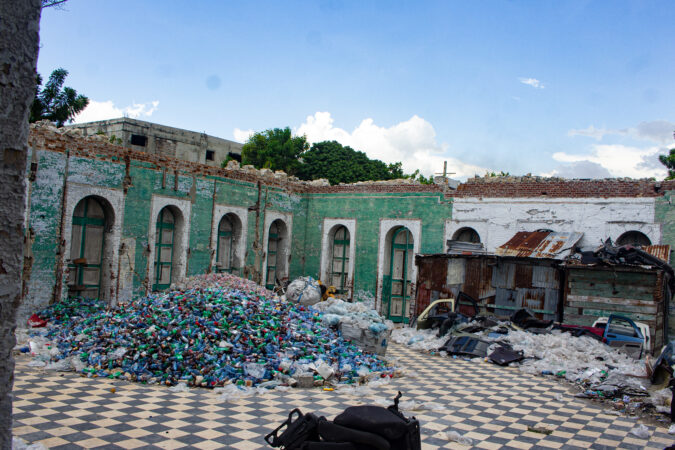
August 11, 2023: Unsanitary conditions take hold in the former residence of Alexandre Pétion on Rue de l’Enterrement. | © Jean Feguens Regala/AyiboPost
However, when it comes to cities outside of Port-au-Prince, ISPAN, the technical arm of the Ministry of Culture and Communication, faces enormous challenges in updating these inventories due to a lack of funding and the glaring insecurity that prevents any field intervention.
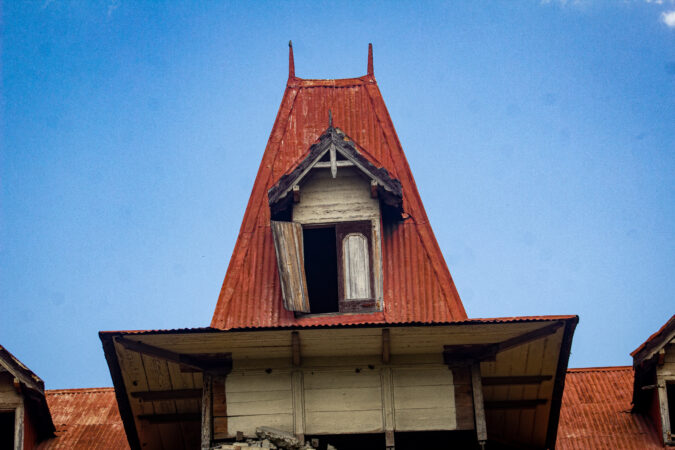
A view from the top of the facade of La Villa Castel Fleury, on Avenue Christophe, on August 11, 2023. | © Jean Feguens Regala/AyiboPost
Furthermore, there is the issue for ISPAN of conducting interventions in certain houses due to the fact that these properties have not yet been declared public property of the state.
In such cases, the owner’s permission is required. Even in cases of public domain, « the law does not grant ISPAN the capacity for immediate intervention; permission from the entity managing the space is first required, » he says.
For example, the headquarters of the Armed Forces of Haiti was once under ISPAN’s control. Currently, it is owned by the military. « Regardless of the nature of the intervention ISPAN wants to carry out, it must be done upon the request of the military, » he explains.
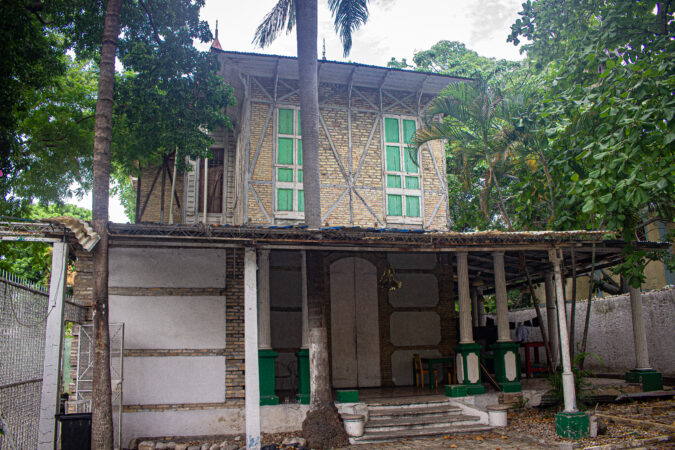
Residence and studio of the internationally renowned Haitian painter, Bernard Séjourné, in Bois Verna. People live in the space, but the building is in poor condition. | © Jean Feguens Regala/AyiboPost
For now, in the metropolitan area, there is no public property directly under the control of the Institute, « aside for the National Palace, the Dessalines barracks, and the ownership title to Fort Jacques, » he explains.

Residence and studio of the internationally renowned Haitian painter, Bernard Séjourné. | © Jean Feguens Regala/AyiboPost
ISPAN is attempting to make progress with at least one significant project. « We are working, » says Colas, « on a restoration project for the former residence of Anténor Firmin. This project is funded by the Cap-Haïtien Mayor’s Office and the Mayor’s Office of New Orleans. »
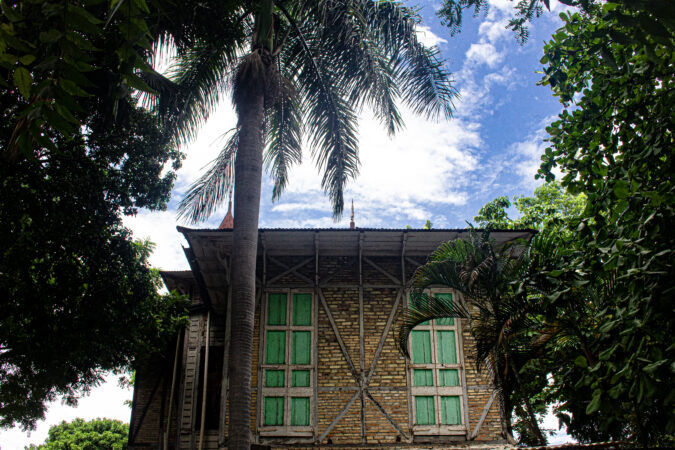
Residence and studio of Bernard Séjourné, internationally renowned Haitian painter. | © Jean Feguens Regala/AyiboPost
Contacted by AyiboPost for comments, the Ministry of Culture and Communication, headed by writer Emmelie Prophète, also the Minister of Justice and Public Security, remained unreachable.
Tchika Joachim participated in this report.
English translation by Sarah Jean.
Cover image ─ A glimpse of the deterioration of the facade of the former residence of President Tancrede Auguste on August 11, 2023. | © Jean Feguens Regala/AyiboPost
Stay in touch with AyiboPost through :
▶ Our Telegram canal : click here
▶ Our WhatsApp Community : click here







Comments